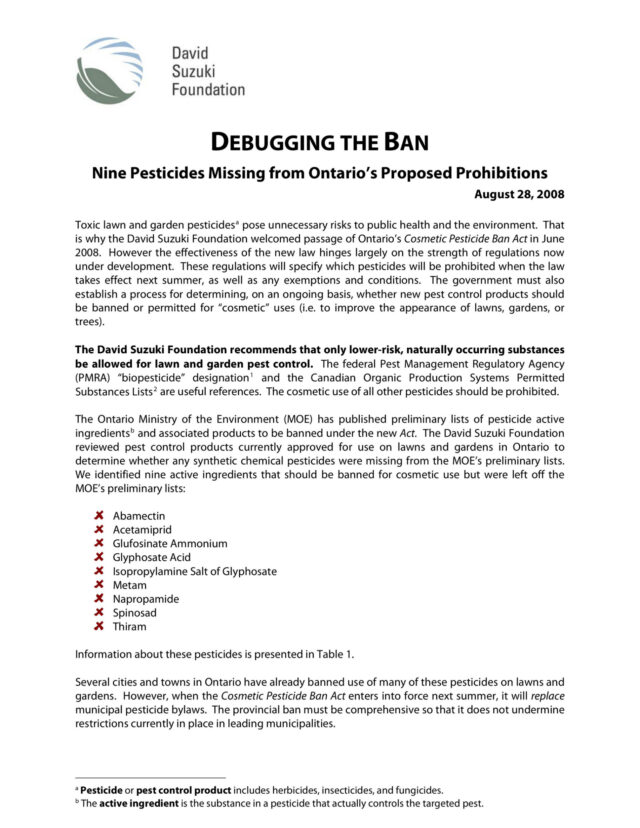Debugging the Ban: Nine Pesticides Missing from Ontario’s Proposed Prohibitions
Published by:
David Suzuki Foundation
Biodiversity pesticides, commercial products, Ontario, policy and regulation, human health and wellbeing, chemicals and toxins
Toxic lawn and garden pesticides pose unnecessary risks to public health and the environment. That is why the David Suzuki Foundation welcomed passage of Ontario’s Cosmetic Pesticide Ban Act in June 2008. However, the effectiveness of the new law hinges largely on the strength of regulations now under development. These regulations will specify which pesticides will be prohibited when the law takes effect next summer, as well as any exemptions and conditions. The government must also establish a process for determining, on an ongoing basis, whether new pest control products should be banned or permitted for “cosmetic” uses (i.e., to improve the appearance of lawns, gardens, or trees).
The David Suzuki Foundation recommends that only lower-risk, naturally occurring substances be allowed for lawn and garden pest control. The Ontario Ministry of the Environment has published preliminary lists of pesticide active ingredients and associated products to be banned under the new Act. The David Suzuki Foundation reviewed pest control products currently approved for use on lawns and gardens in Ontario to determine whether any synthetic chemical pesticides were missing from the MOE’s preliminary lists. This report identifies nine active ingredients that should be banned for cosmetic use but were left off the MOE’s preliminary lists.
